Import AAF sequences from Avid in the same way that you import an EDL. Each AAF file corresponds to a sequence that can be opened in the timeline, including video and audio layers, and select transitions and effects. Some unsupported effects are marked with comments indicating what you have to rebuild in Smoke based on the original offline edit.
Avid can support 720/24p, 720/30p, and 720/60p output from Varicam to create AAF files. The timecode of the source is always 59.94 but the timelines can be 24p, 30p, or 60p.
Smoke has the ability to conform AAF (23.976/29.97/59.94) from Varicam material (23.976/29.97/30/59.94/60). Smoke can also remove non-active frames when capturing Varicam media. The source material must be at the same framerate as the sequence (for example, 23.97 in a 23.97 sequence).
After importing an AAF file, you recapture the footage from the original tapes using the Recapture tool. You can also reload file-based media. Once all the media is captured or reloaded, it is relinked to the sequence.
When importing AAF files that were created in SD resolution and that need to be conformed in HD, you will need to reformat the clips. See Reformatting Clips.
A new reel with the AAF filename is created in the clip library for each imported AAF file. The assembled clip in the new reel has the same name as the original AAF sequence.


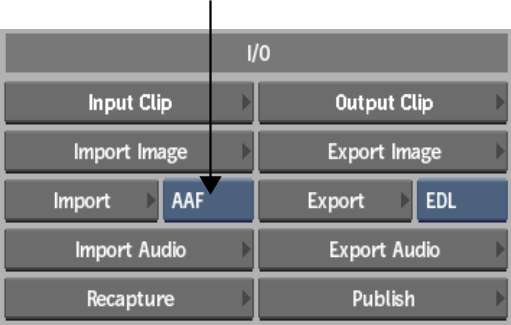


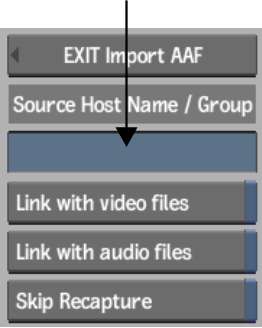
The Wiretap Server must be configured properly to recognise the different hosts that you want to retrieve media from. See the Autodesk Stone and Wire Filesystem and Networking Guide or contact your system administrator.
If you do not enter a value in the Source Host Name / Group field, any paths contained in the AAF file will be interpreted as pointing to your Smoke workstation. You can change the path in the Recapture dialog box when relinking.


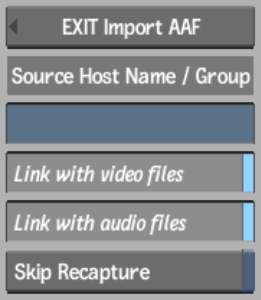


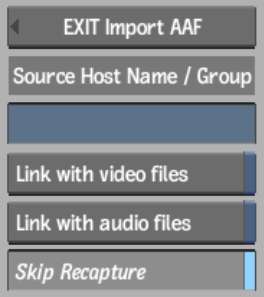
Upon clicking Load, you will be taken to the Library menu, where you can then apply a Reformat action (through the Tools menu) to your timeline, and then use Recapture to load your source media.
If you did not enable Skip Recapture, the Recapture menu appears.


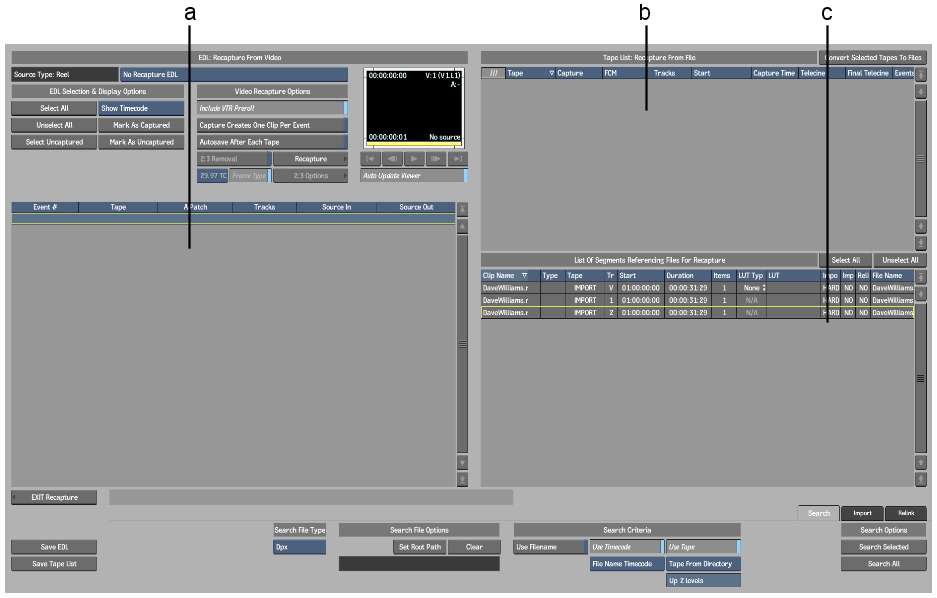
(a) Clip List: List of Clips on Tape (b) Tape List: Recapture From File (c) List of Segments Referencing Files For Recapture